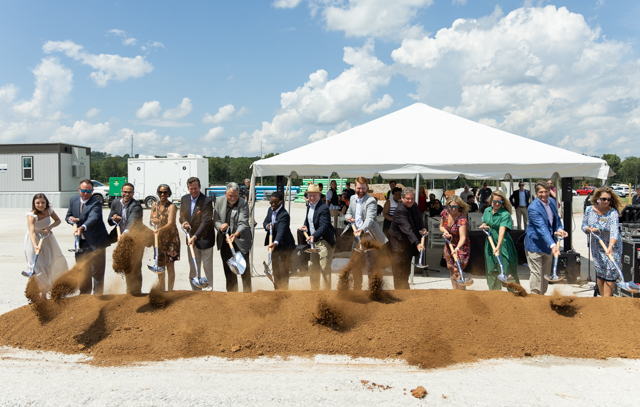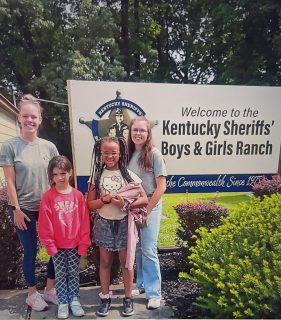BRADD helps people who can’t help themselves
Published 5:00 am Sunday, April 9, 2017

- Gene Becker
The Barren River Area Development District based in Bowling Green helps many people who can’t help themselves.
Its staff develops the nuts and bolts that eventually become a regional framework of projects and services in Allen, Barren, Butler, Edmonson, Hart, Metcalfe, Monroe, Logan, Simpson and Warren counties.
Trending
“We provide technical assistance to cities and counties and we bring our many diverse counties together to look at problems and address them on a regional basis,” said BRADD Interim Executive Director Gene Becker during an interview.
Becker said BRADD can advocate for local, state and national issues.
The National Association of Development Organizations website defines a regional development organization as part of the national network of 540 multi-jurisdictional regional planning and development organizations.
BRADD is governed by majority control of local elected officials, along with representatives from the business community, educational institutions, the nonprofit sector and the general public. The full BRADD board meets once a month in Bowling Green.
There are 15 area development districts in Kentucky covering all 120 counties and 435 cities.
BRADD has 35 to 40 full- and part-time employees to work with officials in the 10 counties.
Trending
For example, BRADD assists developmentally disabled individuals and the elderly who seek independent living so they can stay in their homes and not have to move to nursing homes.
“We allow them to live in their homes as long as possible,” said BRADD Aging Director Michelle Hines. “These are frail and isolated individuals.”
Hines said BRADD staff networks with the senior centers throughout the region and with the Aging Council.
“Our programs allow these individuals to receive the most essential services, including a hot meal, a bath or someone to help clean their home, as well as many other programs to provide assistance to needy individuals, or relief for the ones who help care for them,” Hines said.
Home care financed by federal Title 3 funds provides services to about 600 people while another 200 people who are disabled are assisted through Consumer Directed Options and waiver programs.
“We have expanded the home and community-based program,” said Alecia Johnson, BRADD Aging Planner/Homecare Coordinator.
Hines foresees a growing need for aging services.
“There are concerns with the growing need for Aging Services, as the Baby Boomers continue to age into our programs, which is coupled with stagnant funding levels or even budget cuts,” Hines said. “This is a concern that needs to be brought to the attention of our legislators as budget decisions are made on state and federal levels.
“BRADD and the Area Agency on Aging and Independent Living has expanded our services further into the field of Medicaid waiver programs, as we have expanded our case management capabilities, which has allowed us to serve a wider range of Medicaid recipients,” Hines said.
“The Medicaid waiver programs assist those with physical and mental disabilities achieve greater independence in their homes and communities, while avoiding the need for Long Term Care placement,” Hines said.
“We see the services offered through BRADD/AAAIL continue to grow and evolve in the future. The need for elderly services will continue to increase as the Baby Boomers age and have a need for these programs,” Hines said. “The programs will evolve to accommodate the needs of these individuals, and we see a trend in the increase of client-directed services, where clients have more authority when it comes to how their care needs will be met.”
Hines said the programs funded by state and federal funds are very complicated and BRADD serves as an information center to consumers seeking information on how to enroll, through the establishment of an aging and disability resource center at 177 Graham Ave.
Susan Orlowski, of BRADD’s community and economic development staff, serving as public administration specialist, said there are at least 11 grant opportunities for communities and counties in the BRADD service area.
“There’s a lot of paperwork involved,” Orlowski said. Grants are available from the Kentucky Office of Homeland Security, for pre-disaster mitigation, hazard mitigation, flood mitigation, assistance to firefighters, rural development, recreational trails, community development block grants, economic development assistance, land and water and the federal Appalachian Regional Commission.
Orlowski said BRADD staff sit down with local officials to identify grant opportunities and help them fill out applications.
Additionally, BRADD hosts training workshops for officials and their staffs on the public administration of city and county annual budgets, tax calculations and insight on new or existing state laws.
BRADD also assists county judge-executives attempting to understand the myriad Kentucky and federal regulations for grants to improve their communities.
Becker said the agency is reaching out to the communities it serves to develop a vision for the future and there are plans to host meetings throughout the BRADD’s communities to examine and develop BRADD’s future mission.
Becker said Kentucky’s area development districts are some of the strongest in the nation.
He said the future of BRADD will depend in part on the viewpoints and priorities of the new administration of President Donald Trump.
“It depends on the federal and state budget process,” Becker said.
The BRADD board has taken steps to hire a new executive director and with the end of its workforce mission last year, is evaluating programs and staffing.
Butler County Judge-Executive David Fields said the expertise of BRADD is invaluable to his small county.
“I couldn’t afford to have all the people on staff,” he said.
BRADD staff have worked with Butler County on the establishment of a Trail Town and also involvement with the Blueway scheduled for along the Green River.
BRADD also has worked with Butler County officials on a $500,000 application for a federal Community Development Block grant to bring a new senior center to the county.
The money has been awarded to Butler County and the project is moving along, Fields said.
“We would have never gotten that (CDBG) by ourselves,” he said.
Fields has learned over the years that navigating the federal and state grant landscape is tricky.
Several years ago, the need arose to replace the Reed’s Ferry deck that crosses the Green River. Butler County pursued a grant and found itself having to respond to the “shovel-ready” requirements of the federal government, where the project had to basically be completely planned in order to obtain funding.
Through technical assistance from the Kentucky Transportation Cabinet, Fields was able to get the project done, he recalled.
His knowledge of federal and state projects and their requirements continues to grow through the staff seminars and informational programs held by the BRADD.
“We pick up a lot of knowledge listening to the speakers at the BRADD meetings,” he said.
BRADD has deep roots in the region.
In the summer of 1967, local leaders began organizing area development councils as a response to federal legislation, according to the BRADD website. The purpose was to encourage multi-county cooperation for more effective use of domestic program funds. The Upper Barren River Area Development Council included Barren, Hart, Metcalfe and Monroe counties. Allen, Butler, Edmonson, Logan, Simpson and Warren counties formed the Lower Barren River Area Development Council. Both Councils were incorporated as non-profit agencies in February of 1968.
On April 9, 1968, the two councils met together and agreed to a joint steering committee. The Barren River Development District was incorporated with J. Ewing Stuart, a Russellville businessman elected chairman and Fountain Run Mayor Robert Eaton named vice chairman, the BRADD website noted.
BRADD, according to a recent accounting, submitted $13.2 million in federal and state grants in 2016 and saw funding for $6.7 million. In 2015, BRADD submitted $4.3 million in grant applications and received funding for $2.5 million.
The 43 grants applied for in 2016 reflected a diversity of needs, including $1 million for the Fort Webb elderly housing development in Warren County, $1 million for the film production studio in Hart County, and $1 million in the city of Bonnieville water system improvements, also in Hart County. The fate of those applications was not yet known.






